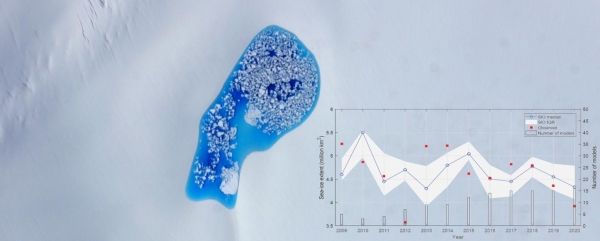As an indicator and “amplifier” of global climate change, the Arctic’s health and stability is the cornerstone of the stability of our climate system. It has far-reaching impacts on ecosystems, coastal resilience, and human settlements in the middle and high latitudes.
The Arctic has experienced amplified warming and extensive sea-ice retreat in recent decades. On 15 September 2020, the Arctic sea-ice extent (SIE) reached its annual minimum, which, based on data from the National Snow and Ice Data Center, was about 3.74 million km2 (1.44 million square miles). This value was about 40% less than the climate average (~6.27 million km2) during 1980–2010. It was second only to the record low (3.34 million km2) set on 16 September 2012, but significantly smaller than the previous second-lowest (4.145 million km2, set on 7 September 2016) and third-lowest (4.147 million km2, set on 14 September 2007) values, making 2020 the second-lowest SIE year of the satellite era (42 years of data).
In 2020, a total of 39 institutions and organizations worldwide submitted their Sea Ice Outlook of the pan-Arctic September SIE. From the June to August SIO, the median of all predictions remained quite stable (4.33 million km2 in June, 4.36 million km2 in July, and 4.3 million km2 in August), which were much higher than the observed value of 3.92 million km2. This indicates that most forecasting systems overestimated the coverage of sea ice in September 2020.
Read more at Institute of Atmospheric Physics, Chinese Academy of Sciences
Image: Arctic Melt Pond in southeastern Alaska on July 16, 2014. (Credit: Photograph courtesy of the MABEL team; Plots by Ke Wei)


